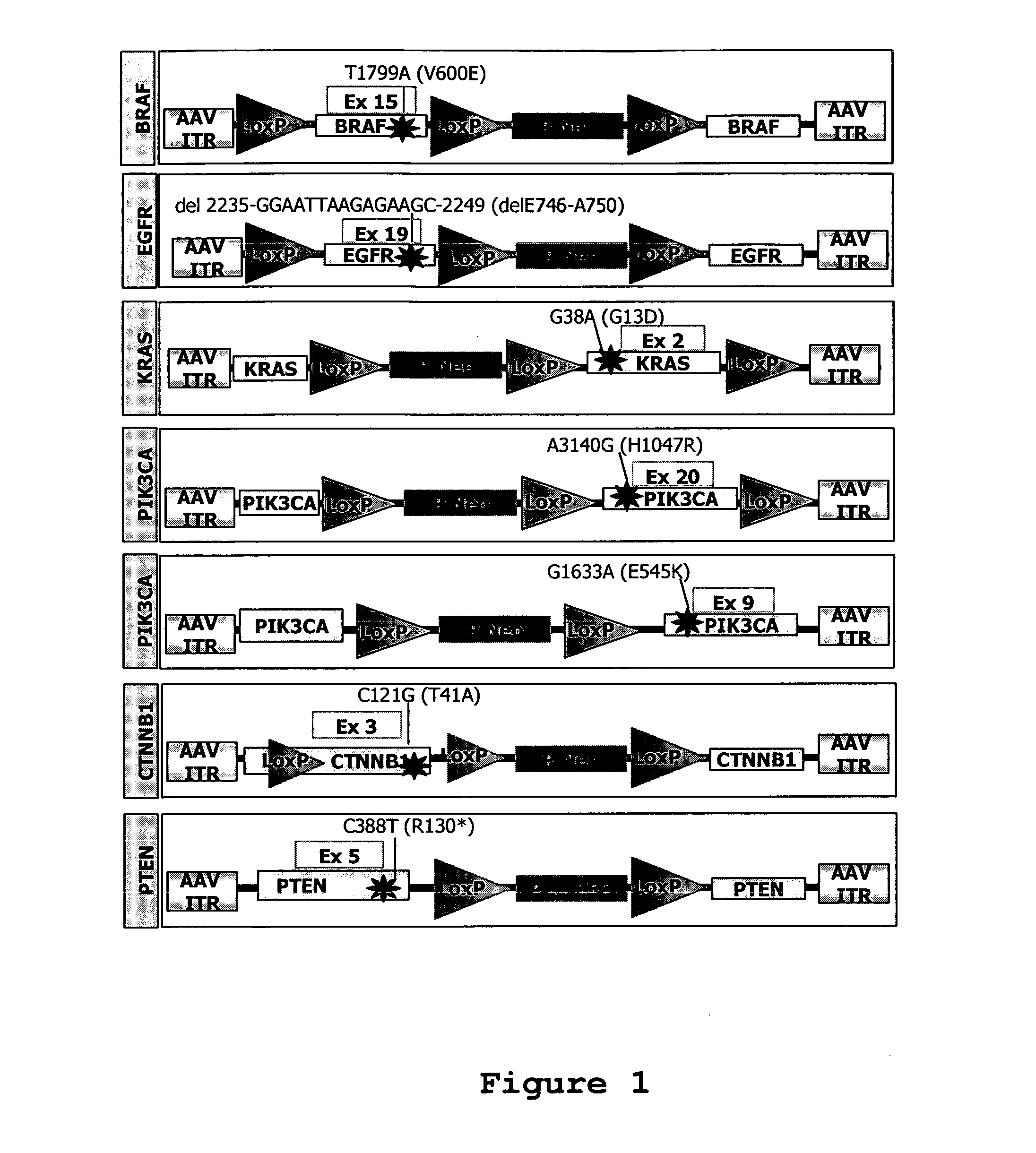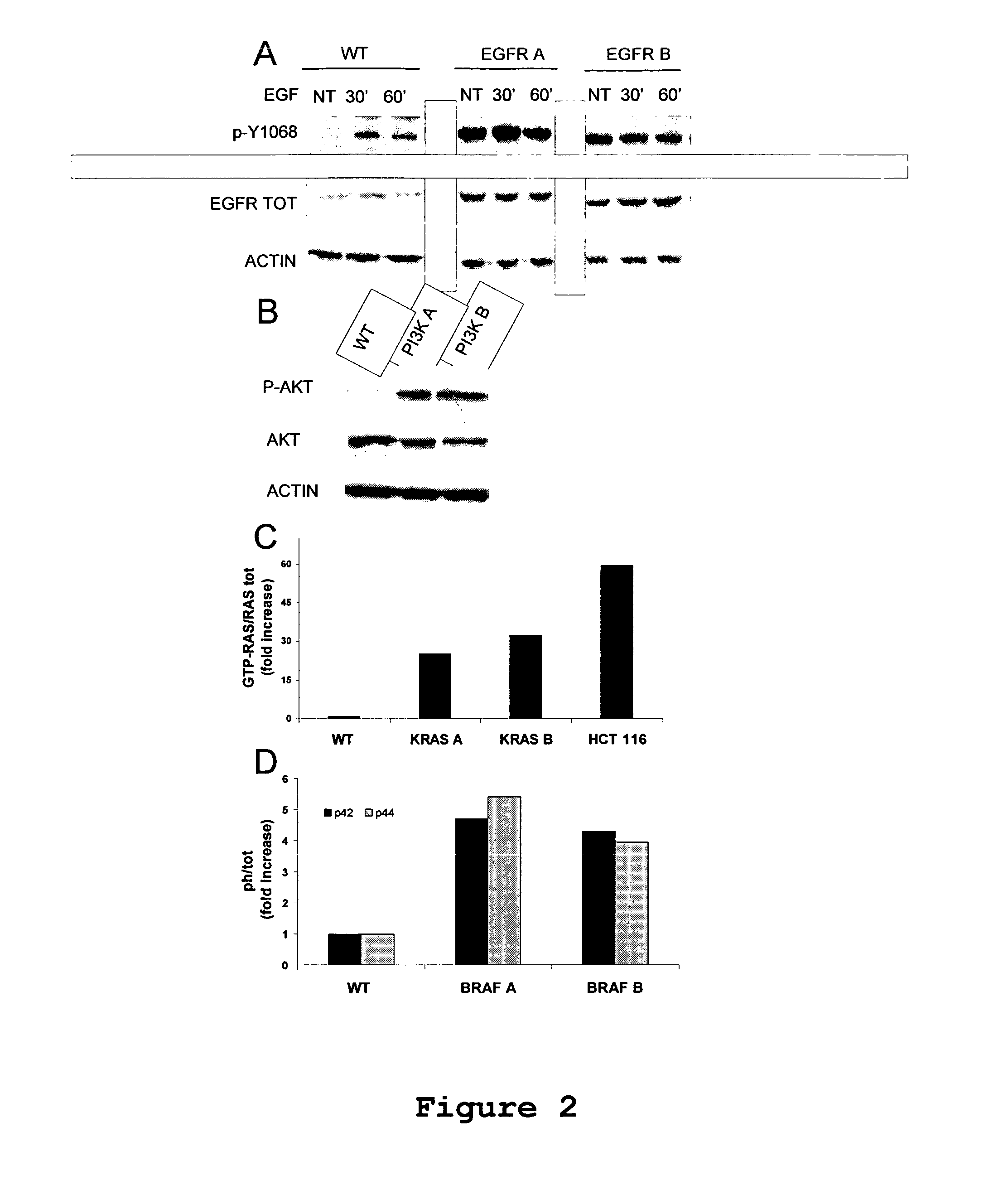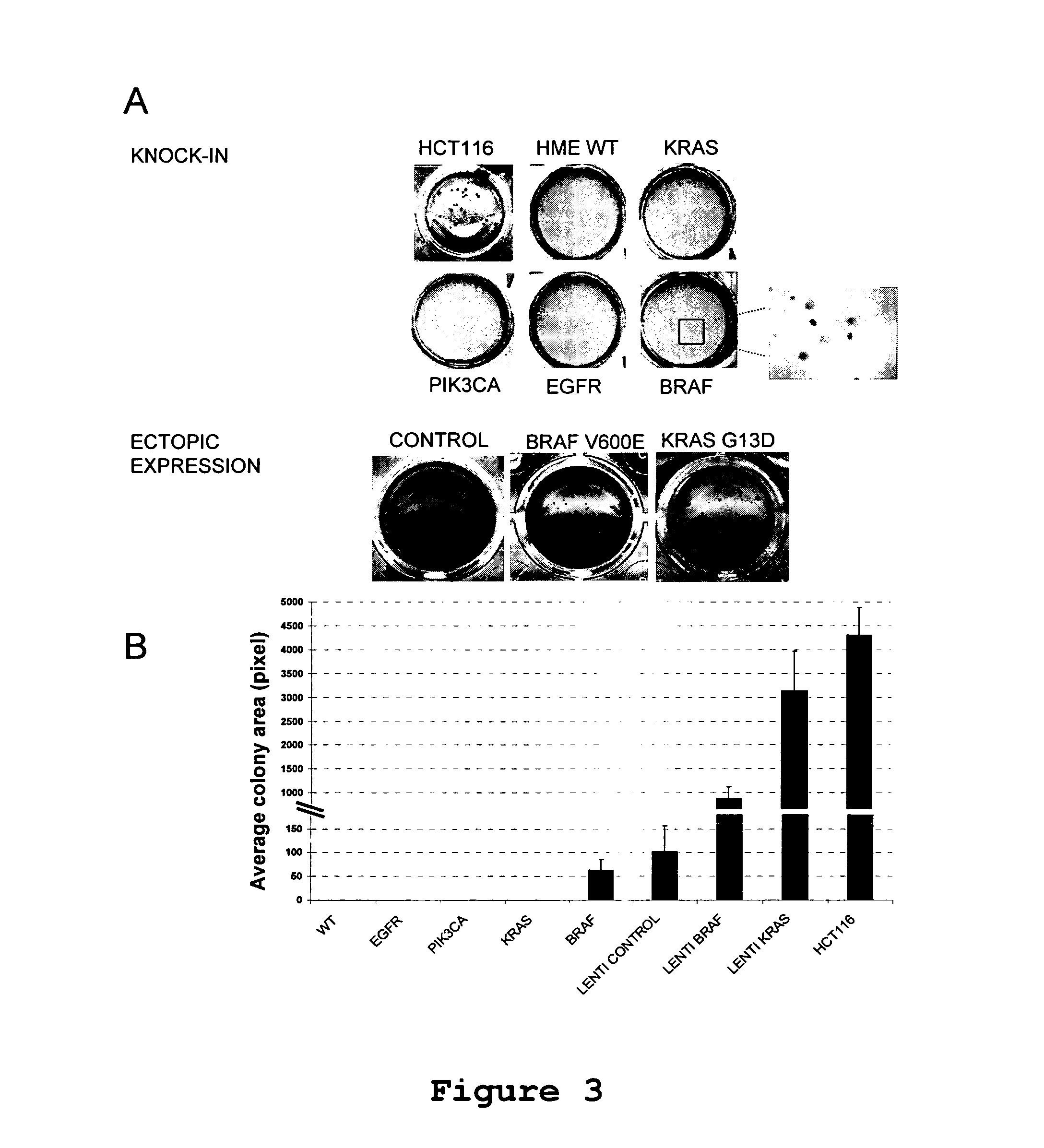Isogenic human cell lines comprising mutated cancer alleles and process using the cell lines
a technology of human cell lines and cancer alleles, applied in the field of human cell lines, can solve the problems of overexpression of target alleles, inability to appropriately modulate mutated alleles in target cells, and hampered by at least two caveats
- Summary
- Abstract
- Description
- Claims
- Application Information
AI Technical Summary
Benefits of technology
Problems solved by technology
Method used
Image
Examples
Embodiment Construction
[0058]The present invention will now be described in detail in relation to some preferred embodiments by way of non limiting examples.
[0059]In the following description, numerous specific details are given to provide a thorough understanding of embodiments. The embodiments can be practiced without one or more of the specific details, or with other methods, components, materials, etc. In other instances, well-known structures, materials, or operations are not shown or described in detail to avoid obscuring aspects of the embodiments.
[0060]The headings provided herein are for convenience only and do not interpret the scope or meaning of the embodiments.
[0061]The construction of cellular models carrying cancer-associated genetic alterations is a prerequisite to dissect their role in tumor progression and to target their oncogenic properties. Until now, strategies to study cancer mutations in human cells have mainly involved ectopic expression of the corresponding mutated cDNA under the...
PUM
| Property | Measurement | Unit |
|---|---|---|
| fluorescent | aaaaa | aaaaa |
| radioactive | aaaaa | aaaaa |
| luminescent | aaaaa | aaaaa |
Abstract
Description
Claims
Application Information
 Login to View More
Login to View More - R&D
- Intellectual Property
- Life Sciences
- Materials
- Tech Scout
- Unparalleled Data Quality
- Higher Quality Content
- 60% Fewer Hallucinations
Browse by: Latest US Patents, China's latest patents, Technical Efficacy Thesaurus, Application Domain, Technology Topic, Popular Technical Reports.
© 2025 PatSnap. All rights reserved.Legal|Privacy policy|Modern Slavery Act Transparency Statement|Sitemap|About US| Contact US: help@patsnap.com



